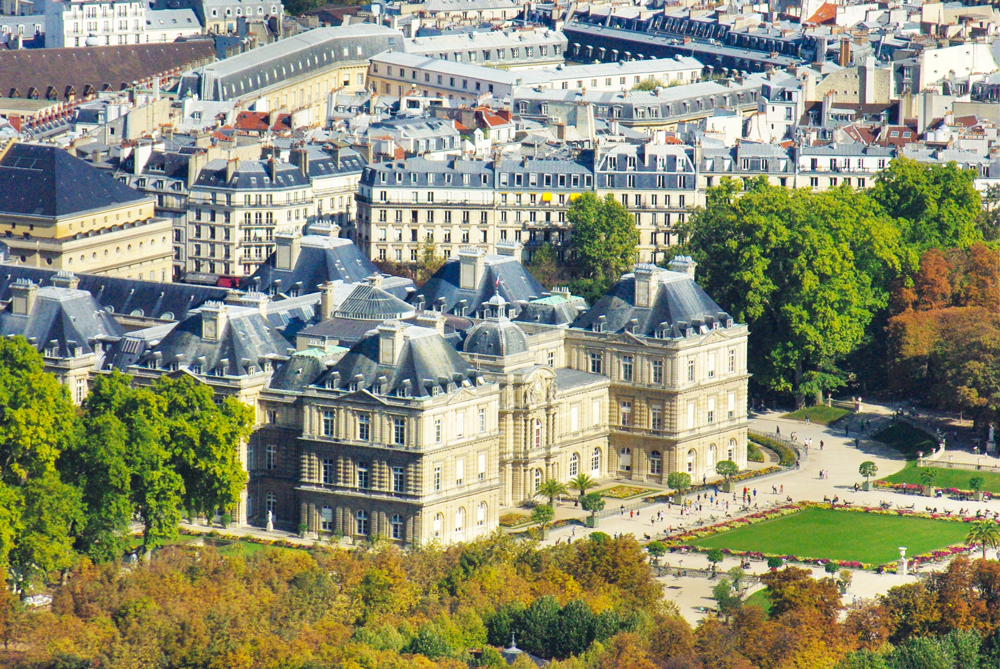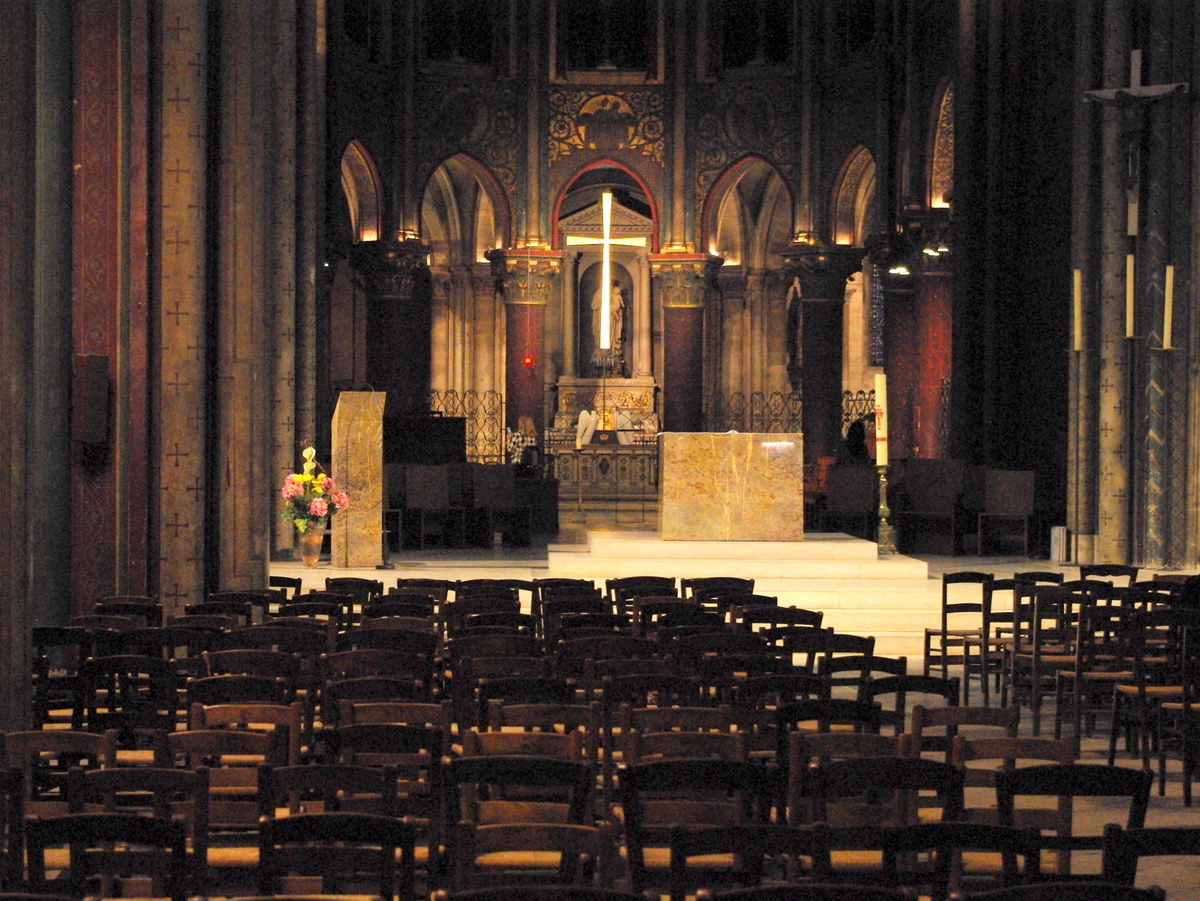Welcome to the Sixth Arrondissement, arguably the most popular with tourists! Situated on the Left Blank, “le Sixième” includes the upmarket neighbourhood of Saint-Germain-des-Prés and the Luxembourg Garden, one of Paris’ most beautiful parks.
A few words about the 6th arrondissement
![Sixth arrondissement of Paris © ThePromenader - licence [CC BY-SA 3.0] from Wikimedia Commons](https://frenchmoments.eu/wp-content/uploads/2014/10/6th-arrondissement-of-Paris-©-ThePromenader-licence-CC-BY-SA-3.0-from-Wikimedia-Commons.gif)
Between the 5th and 7th arrondissements, the Sixth arrondissement of Paris (le sixième arrondissement) is situated on the left bank of River Seine. It includes the upmarket neighbourhood of Saint-Germain-des-Prés and the garden of Luxembourg.
The sixth arrondissement is, in a way, the epicentre of religious and intellectual thought in Paris.
The territory corresponding to the current 6th arrondissement originates in the establishment of the abbey of Saint-Germain des Prés, at the dawn of the Middle Ages.
Since this founding act, it has never ceased to attract learned and innovative minds and has witnessed many events of historical significance.

The 4 districts of the 6th arrondissement
![Districts of the 6th arrt © Paris 16 - licence [CC BY-SA 4.0] from Wikimedia Commons](https://frenchmoments.eu/wp-content/uploads/2014/10/Districts-of-the-6th-arrt-©-Paris-16-licence-CC-BY-SA-4.0-from-Wikimedia-Commons.png)
The 6th arrondissement is composed of four districts:
- The Monnaie district has two facets. Along the Seine, the Institut de France attracts the greatest minds. In the background is a maze of picturesque streets where tourists invade the streets and courtyards.
- The Odeon district is a place of power and leisure. It extends the Sainte-Geneviève Hill to the west. The Senate, a royal palace with a superb garden, provides a green setting for the Schools of Mines and Pharmacy, the Institute of Art and Archaeology, and numerous educational institutions. Around Saint-Sulpice are concentrated publishing houses and bookstores.
- The Notre-Dame-des-Champs district is located around the former parish of Saint-Sulpice. It is here that teachers and artists traditionally reside. The district is commercial on the main roads but residential and student in the blocks where schools and congregations multiply.
- The Saint-Germain-des-Prés district is renowned for being a showcase for haute couture. Near the Ecole des Beaux-Arts, a few meters from the Faculty of Medicine, opposite Lipp, around the Deux-Magots and the Flore, the post-war existentialist movements and the events of 1968 developed.

The 6th arrondissement: facts and figures
The Sixth arrondissement of Paris covers an area of 2.15 km2 with a population of 41,976 (2017).
It is one of the most expensive real estate areas of Paris and one of the richest in terms of average income.
By contrast with the 7th, 8th, 16th arrondissements and Neuilly, the neighbourhood of Saint-Germain-des-Prés has a much more bohemian and intellectual reputation.

The arrondissement of Saint-Germain-des-Prés
Saint-Germain-des-Prés refers to French intelligentsia and is well known for:
- its plethora of art galleries,
- its café culture (Deux-Magots, Flore),
- the revolutionary intellectualism (Jean-Paul Sartre, Simone de Beauvoir),
- French literature (Paul Éluard, Boris Vian, Albert Camus, Françoise Sagan),
- and New Orleans Jazz and Be-Bop music (Sidney Bechet, Miles Davis, Duke Ellington)…
![Place Saint-Germain-des-Prés in 1965 © Willem van de Poll - licence [CC0] from Wikimedia Commons](https://frenchmoments.eu/wp-content/uploads/2014/10/Place-Saint-Germain-des-Prés-in-1965-©-Willem-van-de-Poll-licence-CC0-from-Wikimedia-Commons.jpg)
The 6th arrt. includes some famous Parisian landmarks such as:
- the church of Saint-Germain-des-Prés,
- the Saint-Sulpice church,
- the Institut de France,
- the Senate (Palace of Luxembourg),
- and the garden of Luxembourg.

Where to stay in the 6th arrondissement?
Hotels in Paris vary from stunning luxurious places like the Ritz and the Meurice to much simpler hotels in charming older parts of the city. However, due to its central location, you will find the level of prices of all types of accommodation relatively high in the 6th arrt. Depending on your budget, you might want to find cheaper accommodation further away from the hyper centre of Paris!

Click on this link for a list of accommodation in the 6th arrondissement, or browse the map below:
Public institutions and organisations in the 6th arrondissement
A few public institutions and organisations have their seat in the 6th arrt:
- the Senate (“Le Sénat”, which seats at the Palace of Luxembourg. This is the upper house of the parliament)

- the Académie Française (seats at the Institut de France)

- the École Nationale Supérieure des Beaux-Arts (Fine Arts school)

Shopping in the 6th arrondissement
To go shopping in the 6th arrondissement, it is better to have a well-filled wallet, even if you can also find great brands at affordable prices, such as FNAC, Sephora or H&M.
The shopping arteries of the district are :
- Boulevard Saint Germain and the surrounding streets, with the boutiques of the great designers: Sonia Rykiel, Gérard Darel, Giorgio Armani, Christian Dior, and Ralph Lauren, A.P.C., Carven, Vicomte A. and finally, for bags, Jérôme Dreyfuss. The designer Karl Lagerfeld has a boutique at 194 Boulevard Saint Germain.
- Rue de Rennes, with FNAC, Sephora, Kookaï, Étam, Gap and H&M stores.
- In the Rue Saint Placide, you will find branded stock stores where products are sold at lower prices (Fiancée du Mékong, Du Pareil au même or Jonak).
- You will find two good markets in the 6th arrondissement: the small covered market of Saint-Germain and the famous Raspail market, an outdoor organic market.
- For gourmet streets, try the streets around the covered market (rue Clément, Rue Lobineau, rue Guisarde), rue du Cherche-Midi, and rue de Buci.

The cafés of Saint-Germain-des-Prés
The restaurants, brasseries and literary cafés of Saint-Germain-des-Prés have shaped the legend of this neighbourhood, which was the centre of the world of ideas in the 20th century. Even if these establishments of the Left Bank are true Parisian institutions, prestigious and very touristy, they have kept their soul over the years.
Find out more about the famous cafés of Saint-Germain-des-Prés…

Places of interest in the 6th arrt.
Let’s discover the main sites of this old quarter, as famous for its beautiful church as for its narrow streets of antique shops, cafés and nightlife.
Churches in the 6th arrondissement
The 6th arrondissement includes some of Paris’ most famous churches:
Church of Saint-Germain-des-Prés
The old Romanesque abbey church dates from the 11th century. The church is partly Romanesque (bell tower, nave, transept), and partly Gothic (choir, ambulatory and chapels).

After the damages caused by the Revolution, the church was repaired and restored (1819-1823). Of the three bell towers that topped it, only the massive tower of the façade remains. The bell tower is one of the oldest in France.

Church of Saint-Sulpice
The church was founded by the abbey of Saint-Germain-des-Prés to serve as a parish for the peasants of its domain.
Rebuilt several times, the church was enlarged in the 16th and 17th centuries. Its beautiful antique façade dates from the 18th century.
The church has impressive dimensions, 56 meters long and a height of the vaults of 32 meters, which makes it one of the largest sanctuaries in Paris.

Other places of Interest
The main places of interest in the 6th arrondissement are:
- the Banks of River Seine from Place Saint-Michel to Pont du Carrousel
- the Pont-Neuf
- the Saint-Michel fountain
- the Institut de France
- the Hôtel des Monnaies
- the Palais des Études (site of the École Nationale Supérieure des Beaux Arts)
- the little square in Rue de Furstemberg and the Delacroix Museum
- the Cour du commerce Saint-André and the Procope restaurant
- the Odéon – théâtre de l’Europe
- the Luxembourg Garden










Pin it for later!






Pierre, you always have such good, insightful information along with beautiful photos. Thanks again for a great article!
You’re most welcome! Merci Ellen! 🙂